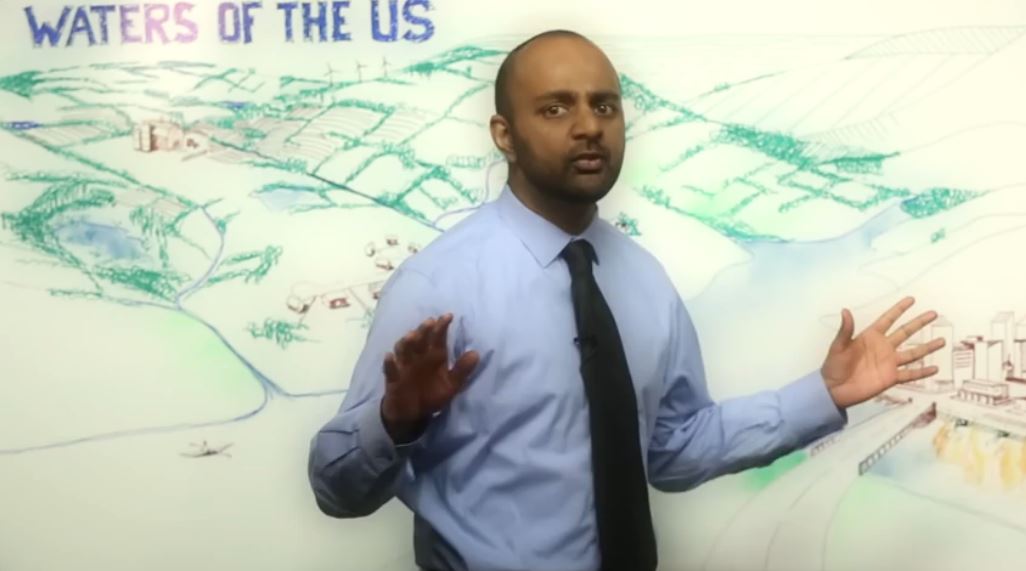Putting an end to decades of uncertainty over how much regulatory power the federal government has over bodies of water – from ponds to oceans — the Trump administration has overturned and replaced an Obama-era rule that would have imposed federal zoning on millions of acres of private land throughout the country.
Unveiled Jan. 23, the Navigable Waters Protection Rule is the Trump’s administration’s response to the 2015 Obama “Waters of the United States” (WOTUS) rule. Presented as an effort to “clarify” Washington’s regulatory jurisdiction under the Clean Water Act, the Obama rule would have forced landowners to seek permits from the Environmental Protection Agency (EPA) and/or the U.S. Army Corps of Engineers to undertake any activity on their property that might affect a nearby body of water, be it a drainage ditch, stock pond, or puddle.
Under the Trump rule, federal jurisdiction over “navigable waters of the United States,” as provided in the Clean Water Act, stays in place. But the Obama-era attempt to extend that jurisdiction to other bodies of water not specifically identified in the 1973 Clean Water Act has been blocked.
Obama’s WOTUS rule was the biggest power grab in EPA’s nearly 50-year history. Now it is gone.
Farmers No Longer Forced to Go to Lawyers and Consultants
“Today, thanks to our new rule, farmers, ranchers, developers, manufacturers, and other landowners can finally focus on providing the food, shelter, and other commodities that Americans rely on every day, instead of spending tens of thousands of dollars on attorneys and consultants to determine whether waters on their land fall under the control of the federal government,” said EPA Administrator Andrew Wheeler.
Wheeler’s point about “attorneys and consultants” is well taken. So confusing is the language of the Clean Water Act that landowners were constantly under threat of being hauled into court either by the feds or by environmentalists for the slightest violation of a statute loaded with imprecise and undefined terms. By design, the Obama WOTUS made things even more confusing, and strengthened EPA’s hand in the process.
Delivering on candidate Trump’s 2016 campaign promise, the administration has brought clarity to the statute and relief to landowners. In Step One, announced in September, the White House repealed the Obama WOTUS rule in total. Federal courts had already struck down large sections of the rule, and now the whole monstrosity has been scrapped. Now, in Step Two, the administration is actually defining key waters-related terms of the law whose lack of definition have bedeviled farmers, ranchers, and others rural landowners for decades.
Providing Definitions
The new rule, which will go into effect on March 24, defines four types of hydrological features that will fall under federal regulatory jurisdiction – territorial seas and navigable waters, tributaries, lakes and ponds, and adjacent wetlands – and lists 12 types of waters that are excluded from the rule, including groundwater, ephemeral pools, and stormwater runoff. Prior converted cropland has been exempted from federal regulation. Yet because there has been no definition of prior converted cropland, farmers often found themselves subject to regulation and litigation anyway. With its new rule, the Trump administration had provided a clear definition of prior converted cropland. Similar definitions have been provided for such terms as “ephemeral,” “Intermittent,” and “adjacent and non-adjacent wetlands.”
The administration’s move was welcomed by such organizations as the American Farm Bureau, National Homebuilders Association, and National Association of Manufacturers, as well as by hundreds of elected officials, ranging from county commissioners to governors and members of Congress.
Deprived of a tool to harasses farmers, ranchers, and other rural landowners, environmental groups blasted the administration.
“With the Dirty Water Rule, the administration has put the interests of polluters over those of the public and our drinking water,” fumed John Rumpler, program director of Environment America (Washington Times, Jan. 24).
The new rule has nothing to do with drinking water, which is regulated under an entirely different statute, the Safe Drinking Water Act.
